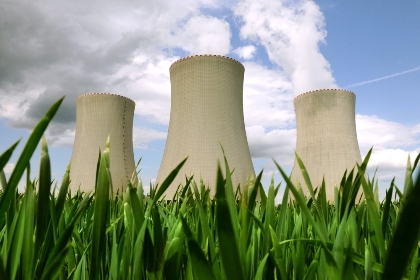Briefing: Global Energy Policy
Despite the efforts of global institutions, energy policy in the developing world continues to be driven by geology, engineering, and economics, not climate change, But it must be recognized that the developing world comes in many shapes and sizes, and the world is in the midst of a carbon-based energy revolution.  Dramatically large carbon-based energy resources—oil and gas—have been discovered over the past decade or so around the world in unexpected places: off the coast of Brazil and Argentina far below the sea bed and in very deep waters in the Santos Basin; within the deep shale formations in the United States in the Bakken, Utica, and Marcellus regions; trapped in sand in Western Canada; and in ever deeper water where more shallow wells were already producing oil, most notably in the South China Sea.
Dramatically large carbon-based energy resources—oil and gas—have been discovered over the past decade or so around the world in unexpected places: off the coast of Brazil and Argentina far below the sea bed and in very deep waters in the Santos Basin; within the deep shale formations in the United States in the Bakken, Utica, and Marcellus regions; trapped in sand in Western Canada; and in ever deeper water where more shallow wells were already producing oil, most notably in the South China Sea.
These finds have shifted the dynamic from discussions of “peak oil” to a future in which traditional energy resources appear to be plentiful and can come from very different places. The future of oil exploration and production has shifted to the Americas, and the United States is now projected to be an energy exporting country within the decade, shifting the balance of trade, providing the country an economic re-do and reducing the strategic significance of oil-producing regions such as the Middle East (and possibly the likelihood of military involvement as well).
Meanwhile, Saudi Arabia is projected to be a net energy importer within the decade, under current trends. This is a natural result of a rising middle class and the resultant increase in consumption. Indeed, if there is any generalization that can be made around energy policy in the developing world, it is that consumption is increasing as a result of development in general and urbanization in particular—the latter being perhaps the most significant global mega-trend of this period of human history.
In the case of Saudi Arabia and several other countries with oil-based economies in sunny climates, the policy is toward alternative energy, particularly solar energy. Indeed, Abu Dhabi is planning to be running 100% on alternative energy within the decade. Others are sure to follow. If the economy is based upon energy export, there is no economy if all the energy is consumed internally. Again, this is an economics driven decision, although Abu Dhabi is also pleased to be a world leader in what most believe will be an ultimate, if very long-term, conversion from fossil fuels.
The other big developing country energy policy story is China, which is projected to consume much of the excess that will become available as the United States slows its imports and production increases elsewhere. China is working hard to manage development and urbanization on a scale never before experienced, leading to resource nationalism, and worse, not just for energy resources but also minerals and food. Indeed, the next military hot spot of the world may be the South China Sea where China lays claim and which is also among the new hot spots for oil exploration and production.
If one is looking for glimmers of hope for alternative energy in the developing world, one interesting study is Brazil which, besides its newly found oil, is also a leader in hydro-power (not without environmental issues) and biofuels which it is producing economically alongside agricultural production.
The luck of geology, carbon deposits, and the power of engineering still combine with the basic forces of macroeconomics to drive energy policy in both the developing and developed worlds. Before a more orderly global energy policy will emerge, the developed nations, primarily the United States, need to lead with a climate change plan. That, however, will require a more robust economic recovery and a national political consensus on the issue.
Professor Phil LaRocco
Handling Growing Energy Consumption
Professor Jason Bordoff
